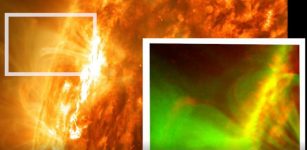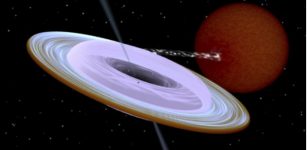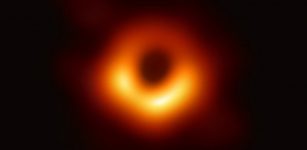Rare, Elusive Cosmic Phenomenon: Mid-Sized Black Hole Tears Apart And Consumes A Star
MessageToEagle.com – A very rare and elusive type of cosmic phenomenon: a medium-weight black hole in the process of tearing apart and feasting on a nearby star, has been observed by astronomers using data from ESA’s XMM-Newton X-ray space observatory, as well as NASA’s Chandra X-Ray Observatory and Swift X-Ray Telescope.
The team detected an enormous flare of radiation in the outskirts of a distant galaxy, thrown off as a star passed too close to a black hole and was subsequently devoured.
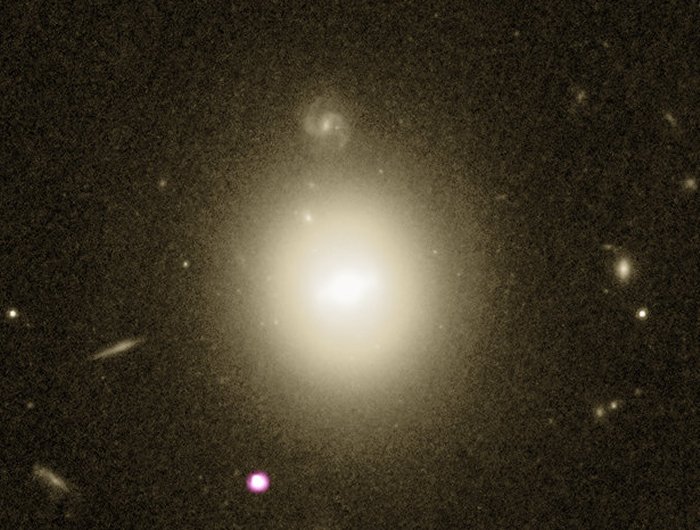
There are various types of black hole lurking throughout the Universe: massive stars create stellar-mass black holes when they die, while galaxies host supermassive black holes at their centers, with masses equivalent to millions or billions of Suns.
“This is incredibly exciting: this type of black hole hasn’t been spotted so clearly before,” says lead scientist Dacheng Lin of the University of New Hampshire, USA.
“A few candidates have been found, but on the whole they’re extremely rare and very sought after. This is the best intermediate-mass black hole candidate observed so far.”
This breed of black hole is thought to form in various ways. One formation scenario is the runaway merger of massive stars lying within dense star clusters, making the centers of these clusters one of the best places to hunt for them. However, by the time such black holes have formed, these sites tend to be devoid of gas, leaving the black holes with no material to consume and thus little radiation to emit – which in turn makes them extremely difficult to spot.
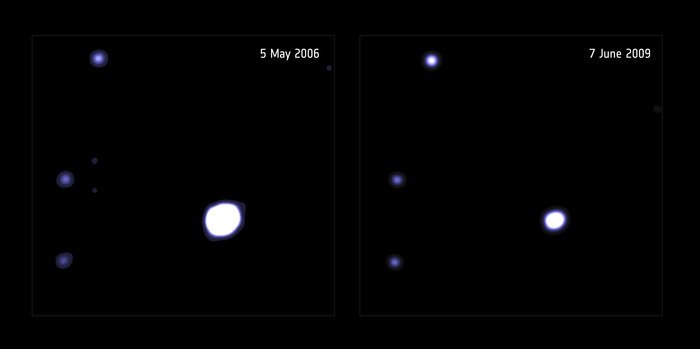
“One of the few methods we can use to try to find an intermediate-mass black hole is to wait for a star to pass close to it and become disrupted — this essentially ‘activates’ the black hole’s appetite again and prompts it to emit a flare that we can observe,” adds Lin.
“This kind of event has only been clearly seen at the center of a galaxy before, not at the outer edges.”
Lin and colleagues sifted through data from XMM-Newton to find the candidate. They identified it in observations of a large galaxy some 740 million light-years away, taken in 2006 and 2009 as part of a galaxy survey, and in additional data from Chandra (2006 and 2016) and Swift (2014).
“We also looked at images of the galaxy taken by a whole host of other telescopes, to see what the emission looked like optically,” says co-author Jay Strader of Michigan State University, USA.
“We spotted the source flaring in brightness in two images from 2005 — it appeared far bluer and brighter than it had just a few years previously. By comparing all the data we determined that the unfortunate star was likely disrupted in October 2003 in our time, and produced a burst of energy that decayed over the following 10 years or so.”
The scientists believe that the star was disrupted and torn apart by a black hole with a mass of around fifty thousand times that of the Sun.
MessageToEagle.com Star, B




